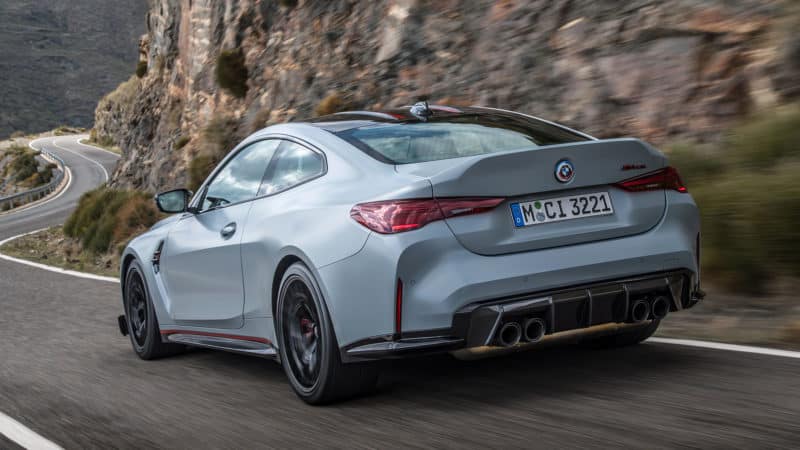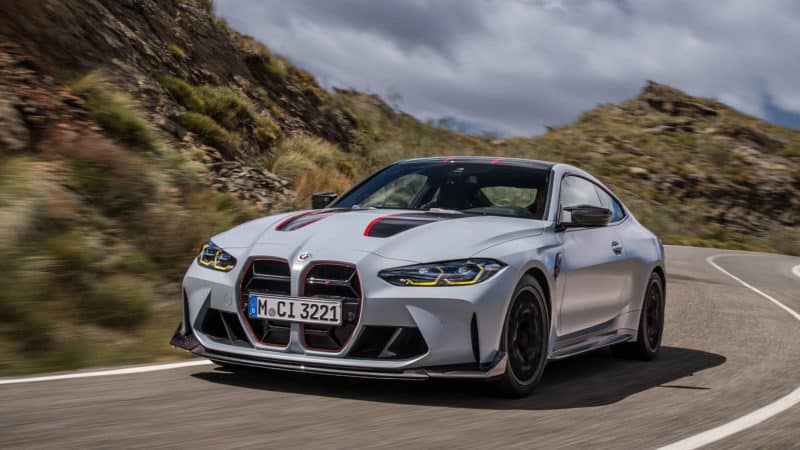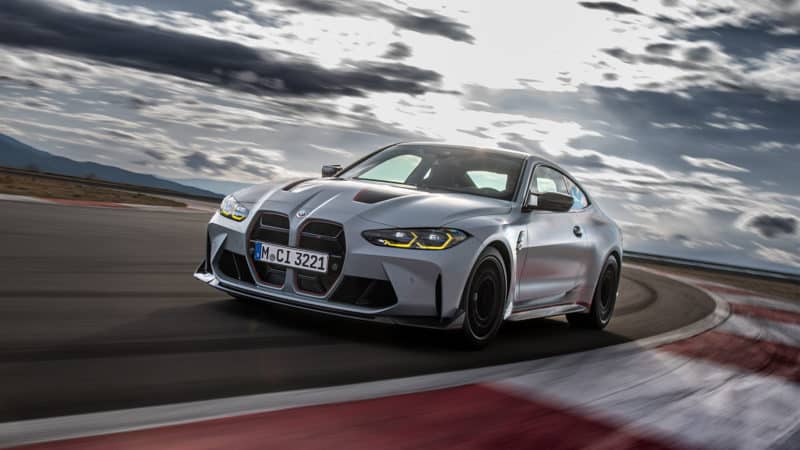Strangely enough, none of them is its power output despite it being only a modest increase of a little more than seven per cent. The weight reduction is another matter. One hundred kilos seems a very precise figure, which would unlikely to be arrived at by a team striving to make the car as light as possible. On the contrary it seems they were given a target which, once achieved, was deemed to be ‘enough’. And 100kg in a car that even thereafter still weighs 1625kg is a reduction of just over six per cent, also known as, ‘not very much’. The car may be lighter, but BMW cannot credibly describe it as light. It’s less even than that shorn from the E36 M3 CSL nearly twenty years ago, which started off as a far lighter car to begin with.
It could have been made lighter still, and doubtless more engaging to drive by the replacement of its eight speed automatic gearbox with a six speed manual. And by ‘automatic’ I don’t mean a whipcrack double clutch transmission, but a conventional torque converter auto. Which doesn’t sound very CSL either. And then there’s the outright pace, and while I am not one to dwell unduly on Nürburgring times, its 7min 20sec lap just isn’t that fast these days, especially for a car wearing Cup 2Rs.
Inevitably comparisons will be drawn between it and the Porsche 911 GT3 which, while less powerful, is so much lighter (by either just over or just under 200kg depending on whether you choose the manual or double clutch gearbox, because it makes both), it actually has a considerably better power to weight ratio. As well as that manual gearbox option, a normally aspirated engine, and a Nürburgring time that places it over 20 seconds further down the road after just one lap.

Our writer thinks BMW can go much further with M4 weight-loss
Newspress
Then again, what does any of this actually prove? Not much. M cars have a habit of defying expectation and the new CSL may be the same. The M5 CS seemed like a complete waste of money until I drove one, while the M2 Competition looked like it would be merely mildly entertaining, yet turned out to be one of best driver’s cars BMW has produced in recent times. By contrast the previous generation M4 GTS looked promising in the extreme on paper yet I didn’t much like it on the track and absolutely hated it on the road.
And if you’re still pondering that price, remember that exclusivity will be a large component: Porsche has somehow created the illusion that its GT products are rare creatures, but in fact they churn out as many as their production slots allow. Buy an M4 CSL and it will be rarer than any GT3 of the recent and not so recent past.
Even so, I do wish BMW would do a proper Leichtbau. Forget increasing power or adding aero packages or track focussed tyres, but see just how light it can make an M4: light panels throughout, thin glass, decimated equipment list, simplified loom, full titanium exhaust, carbon wheels and so on and on, down to the smallest detail. And a manual gearbox. I bet they could lose another 100kg without too much trouble and, if so, they should just keep going. The result would become a cult car overnight and would sell in small volumes at a significantly higher price than that already asked for this new CSL. What’s more, people would still be talking about it 20 years from now, providing an enduring and ongoing value to the BMW brand. Will people still be talking about the new CSL 20 or even 50 years from now? I’ll have a better idea once I’ve driven it.



